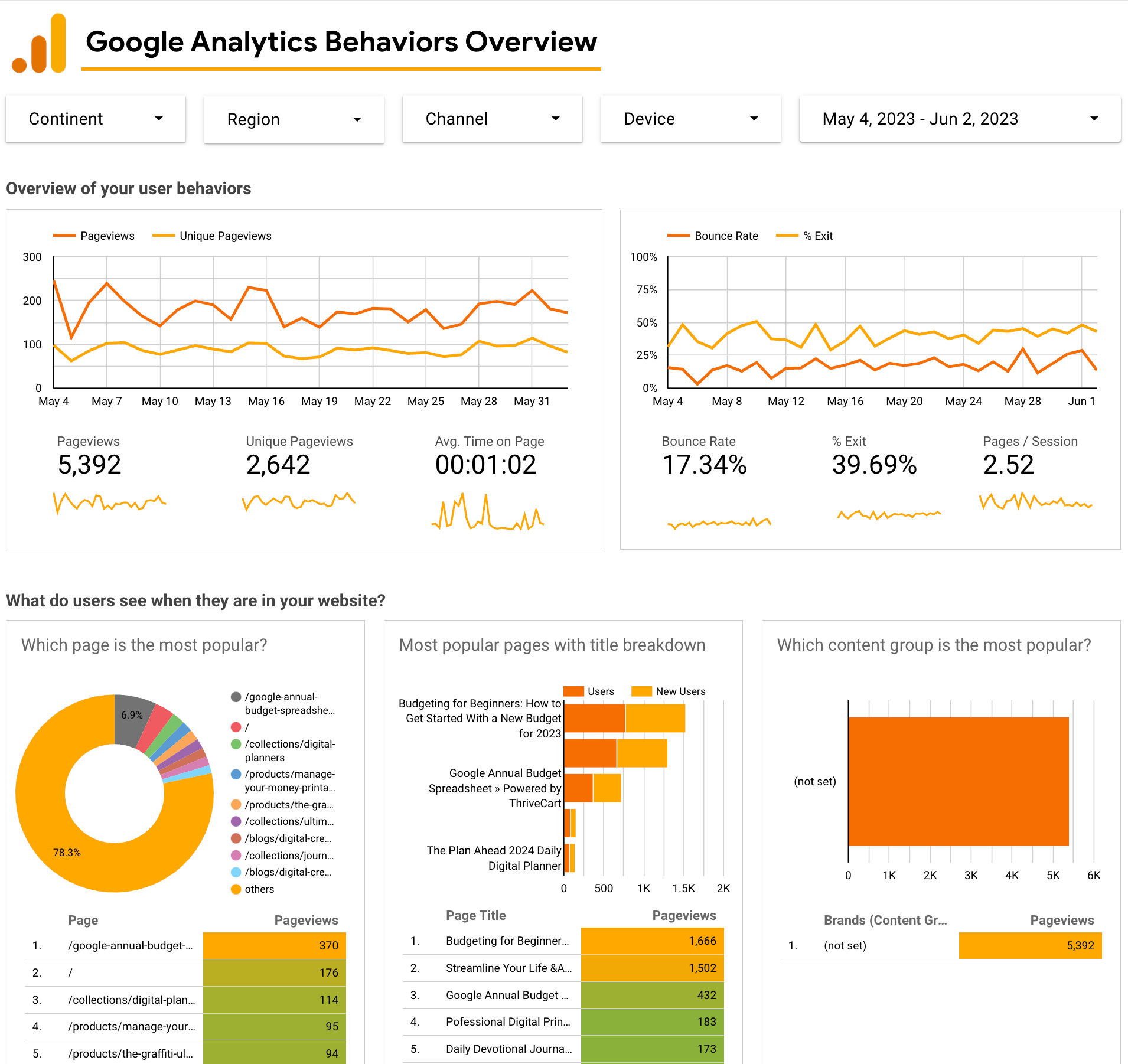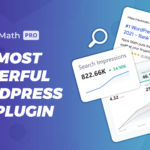Introduction
Hello there, digital pioneers! 🚀 Ever wondered how some digital products hit the bull’s eye, while others miss the mark? The secret sauce is often extensive market research. In this comprehensive guide, we’ll unravel the mystery of conducting market research for digital products. Stick around as we dive deeper into methodologies, techniques, and best practices. Ready? Let’s go!
What is Market Research?
Market research is like the GPS for your business; it helps you identify the most efficient path to your target market. More specifically, market research for digital products is all about collecting data to understand customer needs and preferences, thus guiding your digital product development.
Why Market Research is Crucial for Digital Products
Navigating the world of digital products comes with its own set of challenges, distinct from those of physical goods. The marketplace can be incredibly fickle, and understanding user behavior can feel like solving a complex puzzle.
Given these variables, market research becomes an essential, non-negotiable aspect of digital product development. Neglecting this step can spell disaster for your project, so it’s crucial to invest time and resources into it. Trust me, it’s not something you want to skip!
Benefits of Conducting Market Research
In the digital landscape, the significance of conducting market research cannot be overstated. Knowing your market inside and out can make the difference between your digital product soaring to new heights or plummeting into obscurity.
So, let’s delve into the plethora of advantages that market research offers, from giving you a competitive edge to helping you fine-tune your product to meet customer needs more precisely. It’s an invaluable tool that sets the stage for your product’s success or failure.
Understanding Customer Needs for Enhanced Customer Satisfaction
One of the most direct outcomes of market research is a clear understanding of what your customers actually want. Are you aware of your customers’ pain points? Do you know what features they’re dying to see in your digital product? Market research helps you answer these critical questions.
Conducting surveys, interviews, or even simple user testing can offer insights into customer preferences. This, in turn, can lead to higher customer satisfaction. A satisfied customer is more likely to stick around, share positive feedback, and become an advocate for your brand.
Identify Opportunities and Weaknesses Through Competitive Analysis

No man is an island, and no business is either. Whether you’re a startup or an established company, you’re sharing the market space with competitors. Market research, specifically competitive analysis, gives you the edge.
By assessing how competitors are performing, what they’re doing right or wrong, and what gaps exist in the market, you can position your digital product more effectively. In a rapidly changing digital landscape, staying ahead (or at least abreast) of the competition is crucial.
Risk Mitigation

In business, risks are unavoidable but not uncontrollable. With robust market research, you can mitigate many of the risks associated with launching or scaling a digital product. Say you’re planning to introduce a new feature. Before going all-in, a bit of exploratory research can provide insights into how well this feature will be received.
If the data shows that it’s not worth the effort, you’ve just saved yourself time, resources, and potentially, a whole lot of heartache.
Primary Market Research
Primary research entails the collection of fresh data straight from the original sources. This method offers the advantage of yielding actionable insights that are custom-fitted to your specific digital products.
By interacting directly with your target audience or key stakeholders, you gain the opportunity to understand their needs, preferences, and pain points in a way that pre-existing data simply can’t capture.
Focus Groups

In simple terms, focus groups are small, diverse gatherings of people who represent your target audience. These individuals are brought together to discuss specific aspects of your digital product, be it features, user experience, or even branding elements.
Why Use Focus Groups?
- Deep Dives into Customer Psychology: Focus groups offer a rare glimpse into the collective mind of your customer base. They allow you to understand not just what people think, but why they think that way.
- Immediate Feedback Loop: One of the strongest suits of focus groups is the instantaneous feedback you receive. You present an idea or prototype, and voila! Immediate reactions and discussions.
- Pilot Testing: Before going all in with a new feature or update, focus groups can serve as your pilot audience. Their feedback can be a deciding factor for whether you go back to the drawing board or proceed with development.
- Consumer Sentiment Analysis: Beyond the features and functionalities, focus groups can offer insights into consumer sentiment around your brand or product.
Limitations
- Cost & Time: Setting up focus groups isn’t low cost. It’s a commitment of both time and resources.
- Sample Size: Since focus groups are smaller in scale, they don’t offer the broad, generalizable data that something like an online survey might.
Surveys and Questionnaires

Surveys and questionnaires are structured forms containing a series of questions posed to your target market. These can be distributed via email, social platforms, or embedded directly into your digital product.
Why Use Surveys?
- High-Quality Data: If well-crafted, a survey can generate high-quality quantitative and qualitative data.
- Large Scale: Unlike focus groups, surveys can be distributed to a large audience, offering a more comprehensive view of your market.
- Cost-Efficiency: Online surveys, in particular, are a low-cost method to collect data and provide more insights into consumer behavior.
- Flexibility: Surveys can be easily modified or adapted for different target audiences.
Limitations
- Low Response Rates: Unless incentivized, surveys often suffer from low response rates.
- Data Complexity: Raw survey data can be hard to interpret and may require data analysis skills to derive actionable insights.
Interviews
Interviews involve one-on-one conversations between a researcher and a member of the target audience. These are highly personalized and usually in-depth, focusing on the interviewee’s experiences, preferences, and feedback related to your digital product.
Why Conduct Interviews?
- In-Depth Insight: Interviews offer a deep understanding of individual user experiences and pain points, which can be invaluable in product development.
- Custom Tailoring: Each interview can be adapted in real-time, allowing the researcher to dive deeper into specific topics or issues that come up.

- Building Customer Relationships: The personal nature of interviews often leads to a stronger emotional connection between the customer and the brand, which can be beneficial for long-term customer satisfaction.
Limitations
- Time-Consuming: Interviews take time, not just in the actual conversation but also in the preparation and post-interview analysis.
- Subjectivity: The data collected is highly qualitative and subjective, making it sometimes challenging to apply broadly.
Secondary Market Research
Secondary research consists of utilizing data that has been previously gathered by other researchers or organizations. This approach can offer valuable insights into overarching market trends and consumer behaviors.
Because the data is already available, it’s often a quicker, more cost-effective way to gather information, though it may not be as tailored to your specific digital product or target audience.
Market Data
Market data is a broad term encompassing all types of data related to the market, your business, and your competition. This could range from consumer behavior patterns to sales trends, and even how well similar products in the market are performing.

Why Is Market Data Important?
- Competitive Analysis: Market data allows you to better understand your competition and find out how you stack up against them.
- Customer Insights: With market data, you can better understand what your customers want, how they behave, and what they value.
- Strategic Decision-Making: Businesses use market data to make informed decisions—whether it’s entering a new market, creating a new product, or revamping marketing strategies.
- Identifying Market Trends: Stay ahead of the curve by using market data to identify and capitalize on upcoming market trends.
Limitations
- Data Accuracy: Market data is only as good as its source. Incorrect or outdated data can lead to poor decision-making.
- Overwhelm: The sheer volume of market data available can sometimes be overwhelming, making it difficult to sort through and identify what is truly valuable.
2.2.2 Desk Research
Desk research, also known as secondary research, involves collecting existing research and data from various sources like academic papers, market reports, and articles. This is the opposite of primary research where data is collected firsthand.
Why Do Desk Research?
- Cost-Efficiency: Desk research is often cheaper and faster than conducting your own studies, making it a go-to for small businesses or startups on a budget.
- Wide Scope: Desk research allows you to gather information from various sectors, industries, or markets at once, providing a broad perspective.
- Risk Mitigation: By reviewing existing data and insights, you can avoid some common pitfalls and challenges in your own business endeavors.
Limitations
- Not Customized: The data wasn’t collected with your specific needs or questions in mind.
- Outdated Information: The world moves fast, especially the digital one. What was true yesterday may not be true today.
Quantitative vs Qualitative Research
Quantitative Research involves collecting numerical data that can be quantified. Think large-scale surveys, A/B tests, and usage statistics.
Qualitative Research is more interpretive and seeks to understand underlying reasons and motivations. It involves methods like focus groups, interviews, and usability testing.
Why Choose One Over The Other?
- Scale vs Depth: Quantitative gives you scale, while qualitative gives you depth. Need to know how many? Go quantitative. Need to know why? Go qualitative.
- Data Analysis: Quantitative data can be easily crunched through statistical models, giving you hard numbers. Qualitative data, on the other hand, requires a more nuanced approach, often involving coding responses and seeking patterns.
- Actionable Insights: Quantitative data tells you what’s happening, but qualitative data can often tell you why it’s happening, providing more actionable insights.
Limitations
- Quantitative: Limited in its ability to explore the “why” and “how” of consumer behavior.
- Qualitative: Subject to interpretation, making it potentially biased or limited in applicability.
Steps to Conduct Market Research for Your Digital Product
Identify Your Research Objectives
Before you go down the rabbit hole of data and numbers, take a step back and clearly identify your research objectives. Essentially, you need to answer the question: “What am I hoping to achieve with this research?” This could range from understanding your target audience better, to finding out how your product is performing, to even figuring out the best way to scale your business.
Why It’s Vital
- Focused Approach: Having clear objectives ensures that your market research stays focused. You won’t end up gathering a whole lot of irrelevant data that offers no real insights.
- Resource Allocation: Research can be costly in terms of both time and money. Knowing your objectives helps you allocate your resources more wisely. No more chasing down useless data!
- Measurable Outcomes: Clearly defined objectives are usually measurable, which means you can quantify the success of your research. For instance, if one of your objectives was to increase customer satisfaction, your KPI could be the Net Promoter Score (NPS).
Common Objectives
- Target Audience Understanding: You might want to conduct market research to get a more nuanced understanding of your target audience.
- Product Development: If you’re in the early stages of product development, research can help you understand what features your potential users find most valuable.
- Customer Satisfaction: If you’re looking to measure how happy your customers are with your product or service, your objective could be as straightforward as gauging customer satisfaction through various metrics.
- Market Trends: Understanding emerging market trends can help you stay ahead of the competition.
Examples
- Increase Customer Lifetime Value by 20%: A specific, measurable objective focused on customer retention.
- Reduce Churn Rate to Under 5%: Again, a clear, measurable goal that focuses on keeping your current customers.
- Understand Key Pain Points for Target Demographic: This is more qualitative but equally important. It sets the stage for solutions your products can provide.
Tips
- Be Specific: General objectives can lead to general results. The more specific you are, the better.
- Prioritize: If you have multiple objectives, prioritize them. It’s better to do one thing exceptionally well than many things poorly.
- Align With Business Goals: Always make sure that your research objectives align with your broader business goals.
Choose Your Research Methods
Before embarking on your market research journey, it’s vital to carefully select the research methods that best align with your objectives and the nature of your digital product. Be it surveys, interviews, focus groups, or analytics, each technique comes with its unique set of strengths and limitations.
Your choice of method can significantly impact the quality of your data and, ultimately, the success of your marketing strategy. So, take the time to weigh the pros and cons to ensure you’re making an informed decision.
Why It Matters
- Resource Allocation: Choosing the right method helps you allocate your time and money effectively.
- Quality of Data: Your method will directly influence the quality and type of data you gather.
- Alignment with Objectives: Some methods are better suited for specific goals, such as brand awareness, customer satisfaction, or product development.
Collect Data
Collecting data involves the execution phase where you carry out your chosen research methods to gather the necessary information.
Importance
- Benchmarking: Data collection sets the foundation for comparing current results with past data or industry standards.
- Tailored Strategy: Data collection informs you about your target market, allowing you to tailor your marketing strategy.
Tools to Use in Market Research
Navigating the landscape of digital products can be challenging, but using the right tools can make all the difference. Here’s a breakdown of some essential tools that can aid you in your market research journey.
Google Analytics

Google Analytics is like the Swiss Army knife of market research. It’s a robust tool that allows you to track user behavior, engagement metrics, and much more on your website or app. You can see how long users stay on your site, which pages they visit, and even where they drop off—providing key insights into user experience.
You can also segment your audience to understand various user journeys better. Google Analytics helps in collecting quantitative data that can be invaluable for making informed decisions.
Pros:
– Real-time tracking
– Advanced segmentation
– Broad range of metrics
Cons:
– Steep learning curve
– Data can be overwhelming
Surveys
Surveys are a fantastic way to get direct feedback from your customers or target market. Through surveys, you can ask specific questions about your product features, the user experience, or even gather information for competitive analysis.
Tools like SurveyMonkey or Google Forms make it easy to create and distribute these questionnaires.
Pros:
– Easy to distribute (online or offline)
– Can be anonymous, encouraging honest feedback
– Versatility in question types (multiple choice, open-ended, etc.)
Cons:
– Risk of low response rates
– Data can be skewed if not properly designed
User Testing

User Testing offers an in-depth look into how real users interact with your product. This can be done through beta testing, where you allow a group of users to use your product before it’s officially released. Alternatively, you can use specialized software to track how users interact with your product, identifying both pain points and areas of satisfaction.
This qualitative research method can complement the data gathered from other tools like Google Analytics.
Pros:
– Real-world application and experience
– Immediate feedback
– Can reveal unexpected insights
Cons:
– Can be time-consuming
– May require an incentive for participation
By mixing and matching these tools, you can gain a comprehensive understanding of your market, helping to ensure the success of your digital product. Each tool has its unique strengths and limitations, but when used in conjunction, they offer a more rounded view of your target audience and market landscape.
Data Analysis
After collecting data, the next step is to analyze it. This could mean calculating averages, recognizing patterns, or even applying machine learning algorithms for more complex analysis.
Importance
- Informed Decision Making: Data analysis helps turn raw numbers into actionable insights.
- Future Predictions: Good analysis can not only explain the present but also predict future trends.
Implement Findings
Once you have your data and have analyzed it, the next step is to implement your findings into your business strategy.
Importance
- Strategic Changes: Implementing findings could mean a change in your product, pricing strategy, or marketing approach.
- Agility: The quicker you can implement, the more agile your business becomes.
Part IV: Best Practices in Digital Product Research
Customer Feedback Loops

A customer feedback loop is a strategy for constantly updating your products or services based on ongoing customer feedback.
Importance
- Continuous Improvement: It’s the closest thing to having a ‘live’ focus group all the time.
- Customer Retention: Listening and implementing customer feedback often leads to better customer satisfaction.
User Testing
User testing involves observing users as they interact with your product to identify any flaws or areas for improvement.
Importance
- Usability: Identifies if the product is easy to use.
- Feature Validation: Validates if new features are adding value to the user.
Keep an Eye on the Competition
Monitoring what your competitors are doing in terms of products, marketing, and customer engagement.
Importance
- Market Positioning: Knowing your competition helps you position yourself better in the market.
- Innovation: Seeing what others are doing can inspire you to innovate within your own business.
Part V: Pitfalls to Avoid
Not Understanding Your Target Market

This is a common pitfall where businesses make assumptions about who they believe their target market is without conducting sufficient research. The result? Products and services that don’t align with customer needs, wasted marketing dollars, and a brand that doesn’t resonate.
The Risks
- Misallocated Resources: Marketing to the wrong crowd is like throwing money into a black hole.
- Brand Dilution: If your messaging isn’t tailored for the right audience, it may dilute your brand’s value proposition.
- Loss of Competitive Edge: Understanding your target market is key to staying competitive. Ignorance here could put you behind in the market race.
Ignoring the Mobile Devices Segment
More people are using mobile devices for everything from shopping to social networking. Ignoring this segment is akin to ignoring a big chunk of your potential market.
Consequences
- User Experience Gap: If your digital product isn’t optimized for mobile, you’re offering a subpar experience to a large segment of your audience.
- Missed Revenue: Mobile users are buyers. Ignore them, and you’re leaving money on the table.
Part VI: Conclusion and Next Steps
Recap of Market Research Importance
Market research is the backbone of any successful business strategy. It provides:
- Consumer Insights: Understanding of what your customers want and need.
- Competitive Analysis: Knowledge of what your competitors are doing right and wrong.
- Risk Mitigation: Better predictive powers to foresee market trends and customer behavior.
- Focused Strategy: Data-driven decision-making that aligns with your business goals.
Takeaway
In a nutshell, effective market research is like a GPS for your business. It tells you where you are, helps you decide where you want to go, and then guides you on how to get there.
Ready, Set, Research!
Getting Started
- Set Clear Objectives: Know what you’re looking to achieve before diving into research.
- Choose Methods: Whether it’s surveys, interviews, or data analysis, pick the right research methods for your objectives.
- Plan Budget and Time: Research can be resource-intensive. Budget both your time and money wisely.
A Final Word
Research isn’t a one-and-done kind of deal. It’s an ongoing process. The market changes, consumers evolve, and your business should adapt. Always keep an ear to the ground and a finger on the pulse of your market.
So, ready to steer your business toward success? Well, then—ready, set, research! 🚀📊
Happy researching! 📚📈
🚀 Ready to Transform Your Digital Product Game?
Join Our “How to Market and Sell Digital Products” Class Today and Unleash Your Potential! 💡 Don’t Miss Out on Your Chance to Master the Art of Digital Sales, Even If You’re a Beginner. Secure Your Spot Now and Start Your Journey to Success! 🌟📈
👇👇👇 How to Market and Sell Digital Products Free Class
Don’t Just Survive in the Digital Age—Thrive.







